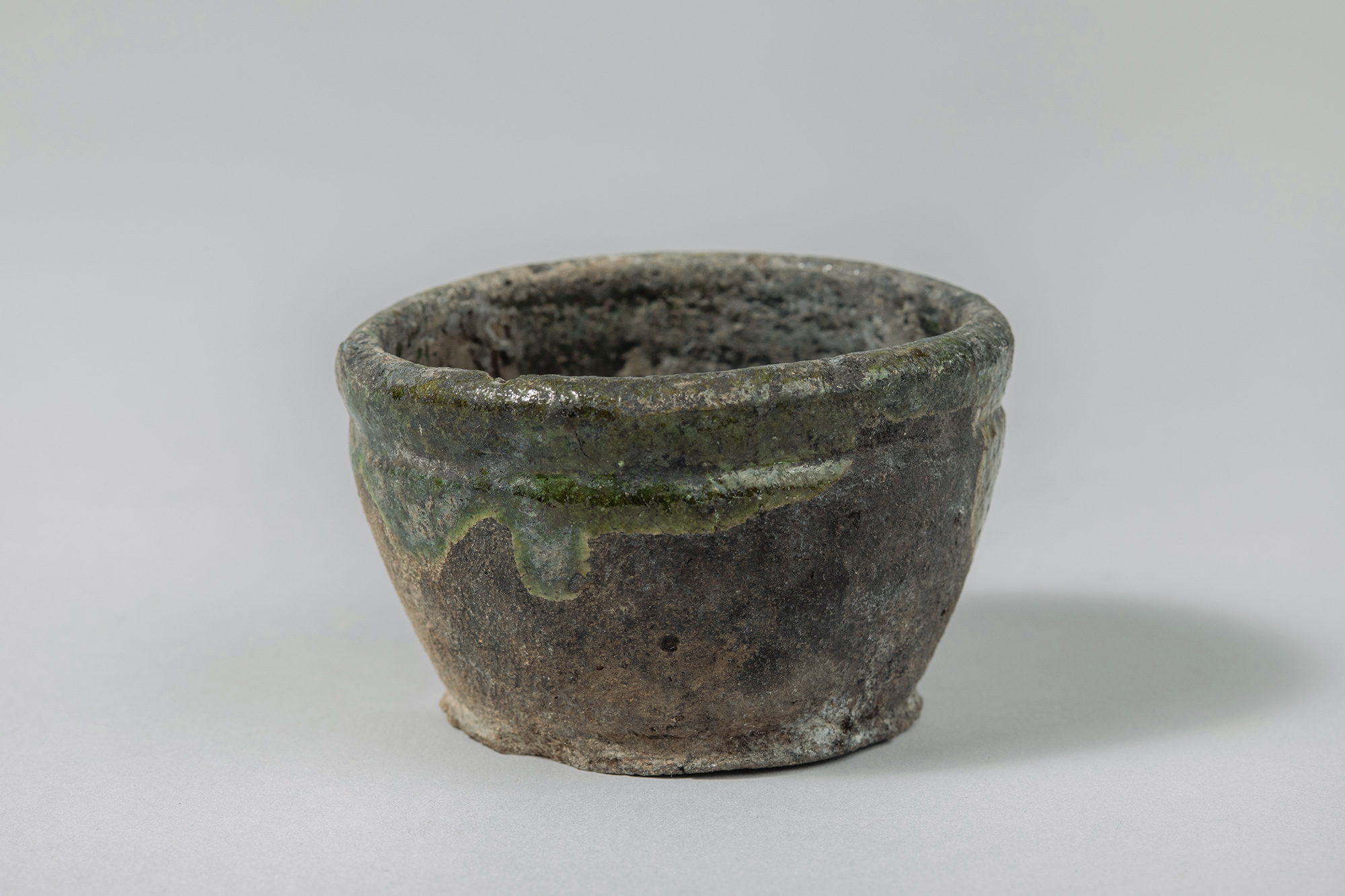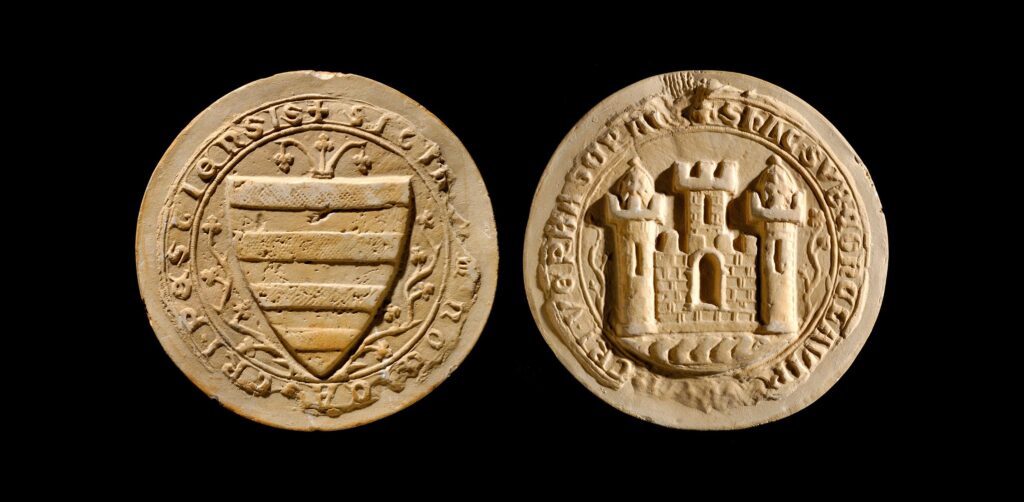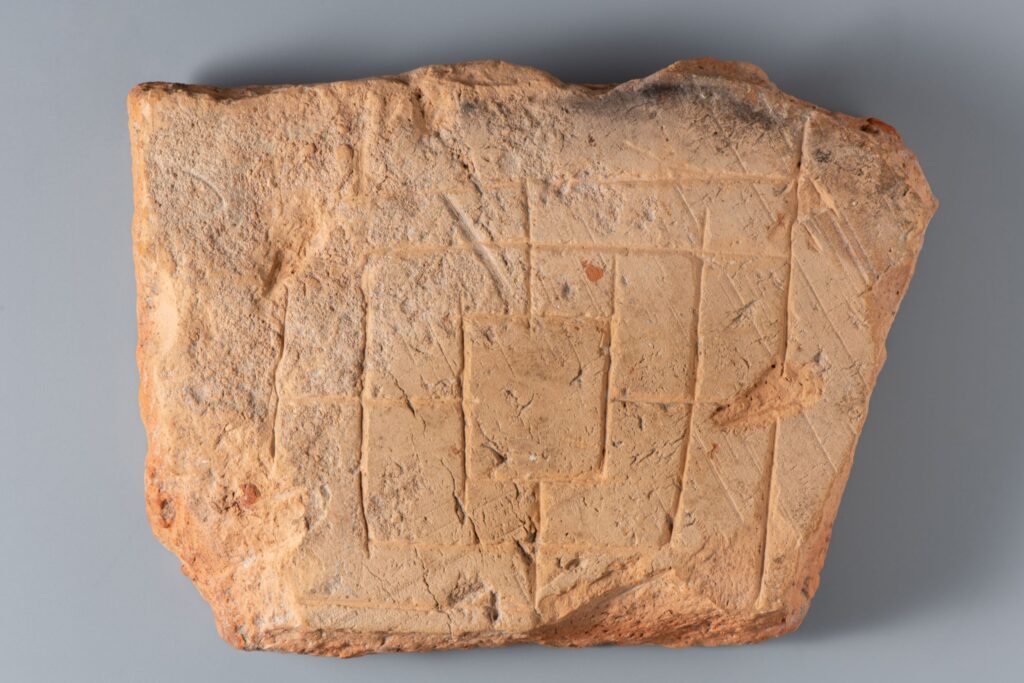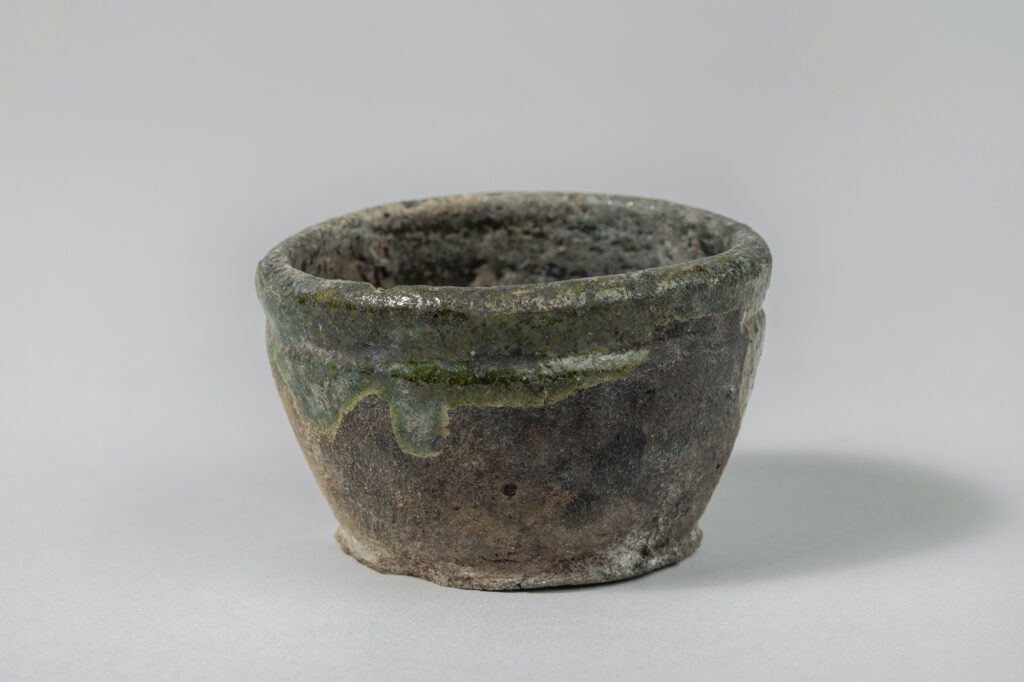Found in the vicinity of the Margaret Island monastery, this pot was probably a container for storing paints.
Several fragments of wall paintings are known from the Dominican monastery, and surviving descriptions indicate that there was a codex copying workshop in the area, where paints were also used. Medieval paint production was largely based on mineral raw materials, but even so a surprisingly large number of colours could be produced.
The most commonly used shades were aluminium red (lead oxide), green (copper sulphate), black (carbonised organic matter) and yellow (earth pigments). The most prized, however, was blue, which was most often made from azurite (copper bicarbonate) or blue-coloured plants, indigo, woad or cornflower. However, these blue colours were neither vivid nor timeless. However, good quality, durable and brilliantly coloured blue dyes made from lapis lazuli were quite rare and expensive. This rock was mined in the area of today’s Afghanistan, far from Europe, and was made usable after long transportation and complex, multi-stage processing. The expensive raw material, difficult to obtain at the time, was only available to wealthy clergymen or monarchs who commissioned the artists – the precious pigment was called ultramarine because of its overseas origin.
The Budapest Historical Museum has several small pots of similar design, some of which even contain remnants of paint pigments.
Text: Szonja Anita Némethi-Keller museologist
Exploratory archaeologist: Katalin Melis Irásné
Photo: Ákos Keppel



